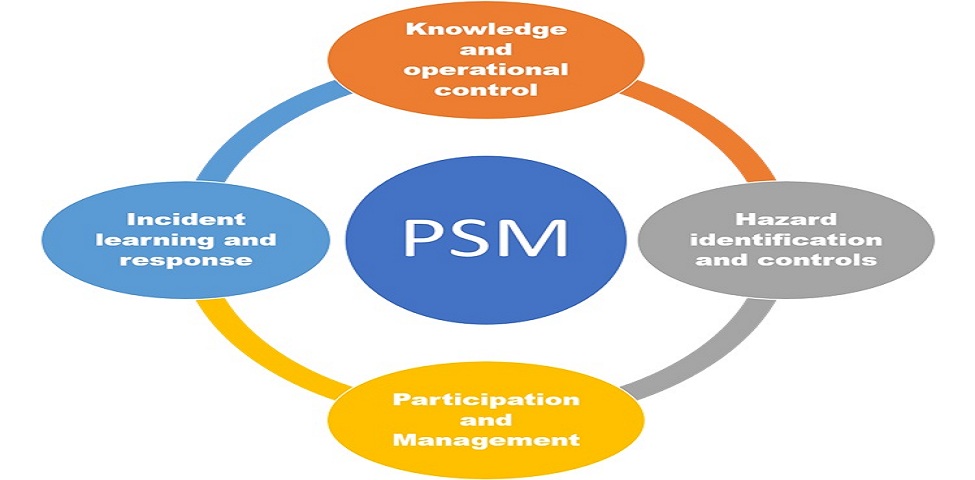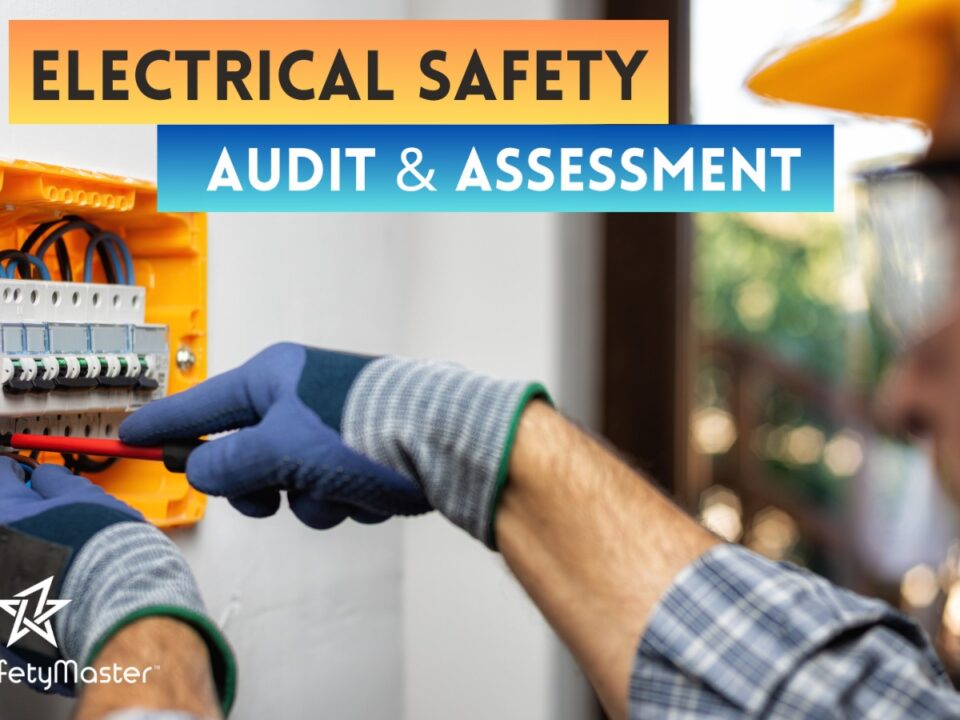Process Safety Management Implementation by TheSafetyMaster
Legal Safety Audit – TheSafetyMaster™
September 21, 2023
Process Hazard Analysis Techniques
September 21, 2023“Implementing Process Safety Management with TheSafetyMaster”
Process safety management is an integral part of any organization’s commitment to ensuring the safety and well-being of its employees, the community, and the environment. It encompasses a systematic approach to identifying, assessing, and mitigating risks associated with processes involving hazardous materials or operations.
In this article, we will delve into the world of process safety management implementation by TheSafetyMaster. We will explore the importance of adopting such measures, understand the potential consequences of neglecting them, and examine how a proactive approach can prevent accidents and foster a culture of safety within an organization. By following this comprehensive guide, you can expect to gain valuable insights into building a robust system that prioritizes process safety.
Setting the Stage for Process Safety Management Implementation
Implementing process safety management is a crucial step toward safeguarding the well-being of workers and ensuring the longevity of an organization. It involves a comprehensive approach that addresses potential risks, human factors, and organizational culture. The journey towards effective process safety management starts with recognizing its importance in today’s rapidly evolving industrial landscape.
As industries continue to grow and technology advances, it becomes increasingly essential to prioritize safety. Accidents can have catastrophic consequences not only in terms of human lives but also in economic terms. The headlines are filled with stories of tragic incidents that could have been avoided if adequate process safety measures were in place. By setting the stage for process safety management implementation, organizations are not only protecting their employees but also demonstrating their commitment to responsible operations.
The Importance of Process Safety Management
Process safety management is not just a regulatory requirement; it is a moral obligation and a fundamental responsibility for any organization operating in high-risk industries. The consequences of neglecting process safety can be catastrophic, resulting in loss of life, severe environmental damage, and significant financial losses. By implementing robust process safety management systems, organizations can safeguard not only their workers but also the communities in which they operate.
Process safety management serves as a shield against potential disasters. It focuses on identifying hazards, evaluating risks, and establishing preventative measures that mitigate the likelihood of accidents. This proactive approach aims to prevent incidents before they occur rather than simply reacting to them after the fact. Through comprehensive hazard analyses and risk assessments, organizations can identify potential vulnerabilities and take decisive actions to eliminate or control them.
By prioritizing process safety management implementation, companies demonstrate their commitment to upholding ethical standards and protecting both their workforce and the environment. It fosters confidence among employees, stakeholders, and the public by showcasing an unwavering dedication to safety excellence. Moreover, investing in robust process safety measures promotes operational efficiency by minimizing downtime due to accidents or equipment failures.
Understanding the Risks and Potential Consequences
When it comes to process safety management, understanding the risks and potential consequences is paramount. Every industrial process holds inherent dangers that, if not carefully managed, can lead to catastrophic events. Chemical leaks, fires, explosions – these are just a few examples of what can occur when safety measures are overlooked or underestimated.
By comprehending the risks associated with various processes and acknowledging their potential consequences, organizations can make educated decisions to prevent such incidents from happening. It is through this understanding that they can develop robust safety protocols and implement effective control systems. While the gravity of these risks may seem daunting, it also serves as a powerful motivator to take proactive steps toward creating a safer workplace environment.
The Human Factor in Process Safety
When it comes to process safety management, one cannot underestimate the crucial role that humans play in ensuring a safe working environment. Despite advances in technology and automation, the actions and decisions made by individuals remain paramount in preventing accidents and mitigating risks. Understanding the human factor is not only about recognizing their potential for error but also leveraging their knowledge, experience, and intuition to enhance overall safety.
Humans bring a unique perspective to process safety management as they possess cognitive abilities that machines simply cannot replicate. By understanding human behavior, organizations can identify potential pitfalls and design systems that support safe practices. This involves creating a culture of open communication where employees feel empowered to voice concerns or near-miss incidents without fear of reprimand. By nurturing an environment of trust and collaboration, organizations can tap into the collective wisdom of their workforce to continuously improve safety measures.
Building a Safety-Oriented Culture
In the realm of process safety management, it is not enough to merely implement procedures and protocols; one must also cultivate a safety-oriented culture within the organization. Building such a culture requires an unwavering commitment from every individual, from top-level management to front-line workers. It entails creating an environment where safety is not just a priority, but an inherent value that guides every action and decision.
A safety-oriented culture begins with effective communication and active leadership. Leaders must consistently reinforce the importance of safety through clear messaging, demonstrating their own commitment to following protocols, and actively engaging with employees at all levels. By fostering open and honest communication channels, employees feel comfortable reporting potential hazards or near-misses without fear of retribution.
The Four Pillars of Process Safety Management
Process safety management is built on a strong foundation, with four key pillars that ensure the robustness and effectiveness of the system. These pillars work in harmony to create a comprehensive approach to managing risks and preventing accidents in high-risk industries.
The first pillar is Process Knowledge, which involves understanding the intricacies of the processes involved, including their hazards, limitations, and potential risks. This knowledge enables organizations to identify areas of concern and implement appropriate control measures. By continually expanding process knowledge through research, analysis, and learning from past incidents, companies can stay ahead of potential problems.
The second pillar is Hazard Identification. This involves systematically identifying all possible hazards associated with each process step or equipment. Through thorough analysis and risk assessments, organizations can uncover potential sources of danger that may lead to accidents or catastrophic events. By identifying hazards proactively rather than reactively, companies can take preventive measures to mitigate or eliminate them entirely.
“The third pillar is Risk Management. Once hazards are identified, it becomes essential to assess their potential impact on safety performance and prioritize them based on severity and likelihood.”
Step-by-Step Guide to Implementing Process Safety Management
Implementing process safety management requires a systematic approach that ensures all necessary measures are taken to safeguard the integrity of a facility and protect the well-being of its personnel. Below, we present a comprehensive step-by-step guide to help organizations navigate this critical process:
The first step in implementing process safety management is to conduct a thorough hazard identification and risk assessment. This involves identifying potential hazards, assessing their severity, and determining the likelihood of their occurrence. By understanding these risks, organizations can prioritize their efforts and allocate resources effectively. Remember, this initial analysis sets the foundation for the entire process.
Assessing your Current Safety System
Before embarking on the journey of implementing process safety management, it is crucial to assess and evaluate your current safety system. This step serves as the foundation for identifying strengths, weaknesses, and areas of improvement within your organization’s existing safety practices.
Begin by conducting a comprehensive review of your safety policies, procedures, and practices. Evaluate the effectiveness of your current risk assessment methods, incident reporting systems, and emergency response protocols. Consider involving key personnel from various departments to gather diverse perspectives and insights.
Additionally, it is essential to gather data on past incidents or near misses that have occurred in your organization. Analyze these incidents to identify recurring patterns or common root causes. This evaluation will provide valuable insights into potential gaps in your safety system that need to be addressed during the implementation process.
By thoroughly assessing your current safety system, you are laying the groundwork for a robust process safety management implementation that builds upon existing strengths while addressing areas for improvement. Remember that this evaluation is not meant to discourage; rather, it serves as an opportunity for growth and development toward a safer work environment.
Establishing Clear Objectives and Goals
When it comes to implementing process safety management, establishing clear objectives and goals is paramount. Without a well-defined direction, efforts can become scattered and unfocused. Therefore, it is essential to lay down a solid foundation by determining what you hope to achieve through your safety initiatives.
Begin by conducting a thorough analysis of your organization’s current safety performance and identifying areas that require improvement. This evaluation will help you identify the specific objectives that need to be set in order to enhance process safety measures. Whether it is reducing incidents, enhancing employee awareness, or streamlining procedures, clearly defined goals will serve as guiding lights on your journey toward a safer workplace.
Developing Comprehensive Operating Procedures
When it comes to process safety management, comprehensive and well-documented operating procedures are of paramount importance. These procedures serve as a roadmap, guiding employees on how to perform tasks safely and efficiently. By defining clear instructions for each step of the process, potential hazards can be identified and mitigated effectively.
Developing comprehensive operating procedures involves a meticulous approach. It requires collaboration between management, engineers, and frontline workers to ensure that all aspects of the operation are thoroughly understood and documented. Each procedure should include detailed step-by-step instructions, safety precautions, equipment requirements, emergency response measures, and any necessary regulatory compliance guidelines.
By investing time and effort into developing comprehensive operating procedures, organizations not only enhance safety but also improve operational efficiency. Clear instructions promote consistency among workers’ actions while minimizing the risk of errors or accidents. Moreover, when employees have access to well-thought-out procedures that prioritize their safety, they feel valued and empowered in their work environment.
Training and Educating Employees for Safety
Creating a safe working environment goes beyond implementing processes and procedures; it requires equipping employees with the knowledge and skills necessary to identify potential hazards and respond effectively. Training and educating employees in process safety is paramount to ensure that they are well-prepared to handle any unforeseen circumstances that may arise.
The first step in training is to develop a comprehensive curriculum that covers all aspects of process safety, including hazard recognition, emergency response, equipment operation, and maintenance protocols. This curriculum should be tailored to the specific needs of each job role within the organization, ensuring that every employee receives the necessary training relevant to their responsibilities. Regular refresher courses should also be provided to reinforce knowledge and keep employees up-to-date with evolving safety practices.
Ensuring Effective Emergency Preparedness
When it comes to process safety management, one cannot undermine the significance of effective emergency preparedness. In the event of an unforeseen incident or emergency, a well-prepared organization can swiftly respond, mitigating risks and minimizing potential damages. Ensuring that your facility is adequately equipped and your employees are trained to handle emergencies is paramount.
Creating a robust emergency response plan is the cornerstone of effective preparedness. This plan should include clear procedures for identifying potential emergency scenarios, establishing communication protocols, and defining roles and responsibilities during an emergency. It is crucial to conduct regular drills and simulations to test the efficacy of the plan and enhance employee readiness.
A positive aspect of investing in thorough emergency preparedness is that it fosters a sense of security among employees. When individuals feel confident in their ability to respond effectively to emergencies, they can concentrate on their work with peace of mind. Moreover, this commitment to safety demonstrates an organization’s dedication to its employees’ well-being, cultivating a culture where everyone feels valued and protected.
Continuous Improvement and Monitoring Progress
Continual improvement lies at the core of effective process safety management implementation. Once the initial steps are taken, it is crucial to establish a system that constantly evaluates and enhances safety measures. This ensures that potential risks are identified, addressed, and mitigated on an ongoing basis.
To monitor progress effectively, regular safety audits should be conducted to assess the effectiveness of implemented measures. These audits provide valuable insights into any gaps or areas that require improvement. By analyzing incident reports, near misses, and feedback from employees, organizations can identify patterns or recurring issues that need attention.
Additionally, fostering a culture of open communication is vital in this stage. Encouraging employees to report any safety concerns or suggestions for improvement can lead to valuable insights and innovative ideas for enhancing process safety. By involving all stakeholders in the continuous improvement process, a collective effort towards a safer workplace is fostered.
Conclusion
In conclusion, the implementation of Process Safety Management is not just a legal obligation, but a fundamental responsibility for organizations operating in high-risk industries. By adopting a proactive and comprehensive approach towards process safety, companies can mitigate potential hazards, protect lives, and safeguard the environment. Through diligent adherence to the four pillars of Process Safety Management – hazard identification, risk assessment, risk management, and continuous improvement – businesses can foster a culture of safety that permeates every level of the organization. This commitment to safety will not only ensure compliance with regulations but also enhance productivity, boost employee morale, and ultimately contribute to a brighter future for all stakeholders involved. Let us embrace this vital aspect of industrial operations and pave the way for safer workplaces tomorrow.
Embracing a Culture of Safety for a Better Future
A truly successful process safety management implementation goes beyond mere compliance with regulations. It involves fostering a culture of safety that permeates every aspect of an organization, from the executive level down to the front-line workers. Embracing this culture is not only essential for preventing incidents and protecting lives, but it also holds the key to achieving long-term business sustainability and growth.
Creating a culture of safety requires more than just implementing systems and procedures; it necessitates a shift in mindset and values. Organizations must prioritize safety as an integral part of their operations, embedding it into their core values and fostering an environment where everyone feels empowered to identify hazards, report near misses, and actively participate in continuous improvement efforts. By promoting open communication channels, providing comprehensive training programs, and recognizing individuals’ contributions to safety initiatives, organizations can inspire employees to take ownership of their own well-being and contribute to building a safer future.



